Though Anastasia is more widely remembered, here's why Maria Romanov remains the most captivating daughter of Tsar Nicholas II.
Born in June 1899, Maria Romanov was the third of the Russian royal family’s five children. The oldest daughters — Olga and Tatiana — made up the so-called “the Big Pair” while Maria and her younger sister Anastasia were referred to as “the Little Pair.” Collectively, the four sisters referred to themselves as OTMA (for the first letter of each of their names).
But of the four grand duchesses born to Nicholas and Alexandra, Maria Romanov was widely considered to be the most beautiful, known for her light hair and “dark blue eyes so large that they were known in the family as ‘Maria’s saucers.'”
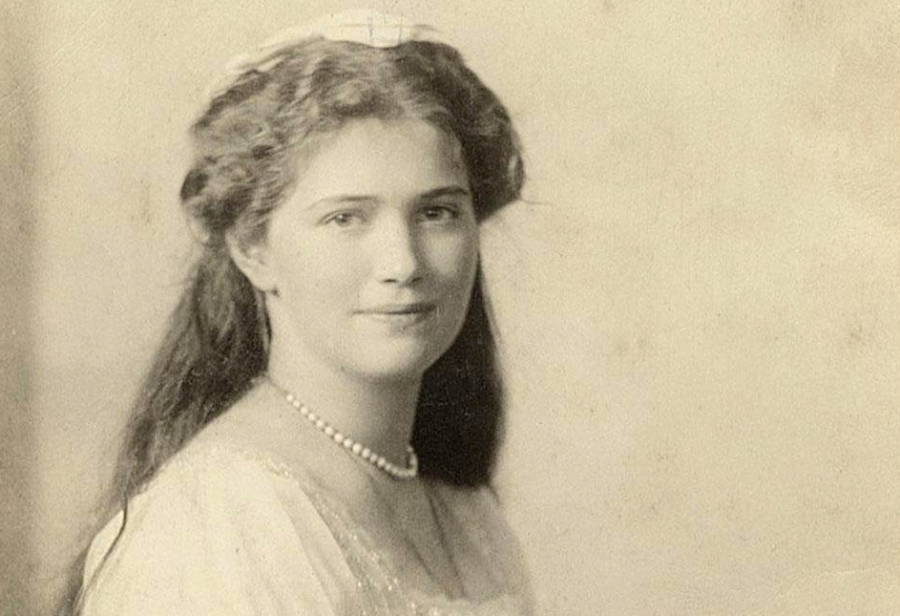
Wikimedia CommonsMaria Romanov
And in contrast to her younger sister, who was more mischievous and reckless, Maria (or “Mashka” as she was known to her family) was described as merry and good-natured. For example, when Anastasia roamed about teasing or even kicking people, Maria would follow behind to apologize profusely.
And although the story of Maria Romanov as a whole so often falls in the shadow of Anastasia’s, her life and untimely death provide a fascinating, lesser-known look at the story of Russia’s last royal family.
The Flirtatious Young Duchess

Wikimedia CommonsMaria Romanov and Anastasia roughhouse with their cousin, Grand Duke Dmitri Pavlovich.
As a young duchess, Maria Romanov reportedly loved to flirt and discuss her dreams of marriage and children. Her childhood nanny recalled how “One day the little Grand Duchess Mari[a] was looking out of the window at a regiment of soldiers marching past and exclaimed, ‘Oh! I love these dear soldiers; I should like to kiss them all.'”
As many of her contemporaries noted, “had she not been the daughter of the Tsar, this strong, warmhearted girl would have made some man an excellent wife.” Lord Mountbatten, who was cousin to the grand duchesses and met them when he was a young boy, would later reminisce, “I was crackers about Mari[a], and was determined to marry her. She was absolutely lovely.” Although the pair would never meet again, Mountbatten kept a picture of Maria Romanov near his bedside until his death.
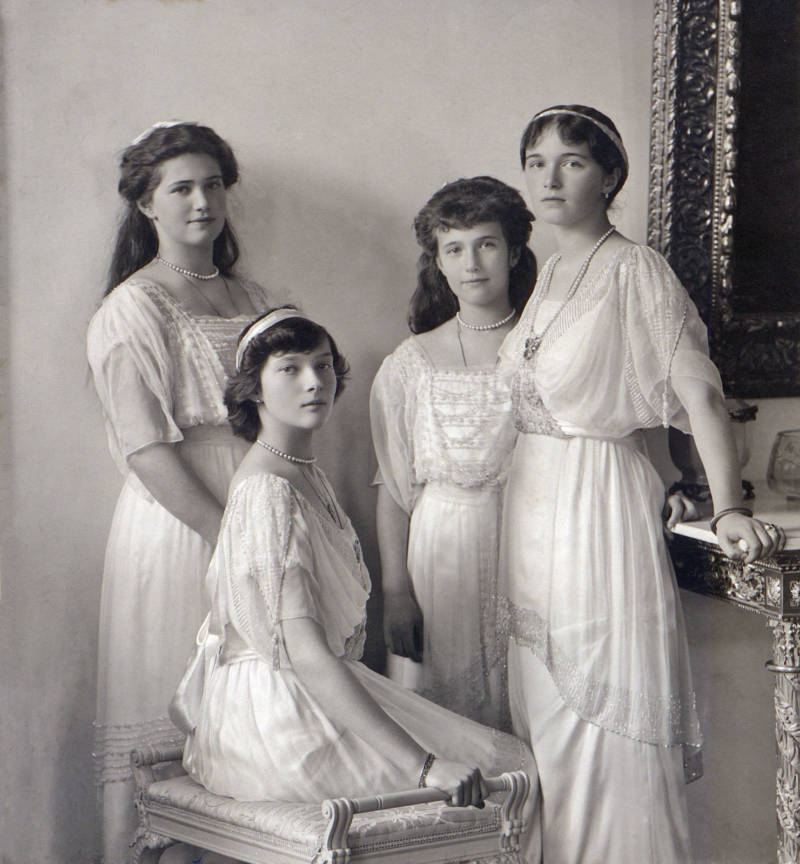
Public DomainThe four Romanov sisters.
Despite her wealth of adulation and her royal blood, Maria Romanov and her sisters had a surprisingly spartan young life. The Big Pair and the Little Pair each shared bedrooms with plain cots and started their days with a cold bath. Nonetheless, Tsar Nicholas II and Tsarina Alexandra were widely said to be caring parents who gave their children plenty of affection.
The family was not without its problems, however, namely Alexei’s hemophilia. The slightest bump could cause the boy to hemorrhage for days, with the tsarina often becoming hysterical and completely breaking down, shutting herself and the young prince away from the outside world. But everything changed in 1905 when a mysterious man entered the lives of Maria Romanov and her family.
Rasputin, The “Mad Monk”

Wikimedia CommonsGrigori Rasputin
Enter Grigori Rasputin, a Siberian peasant mystic who enjoyed great success passing himself off as a holy man with special powers to the ladies of Russian high society. Thanks to his elite connections, Rasputin was eventually introduced to the tsar himself.
The truth about Rasputin’s seemingly-magical ability to heal Alexei is still shrouded in mystery, but even the most skeptical historians agree that for whatever reason, when the “Mad Monk” prayed over the tsarevich, the boy’s bleeding stopped.
Naturally, the imperial couple was overjoyed. Alexandra, in particular, fell under Rasputin’s spell, becoming entirely beholden to the only man who could heal her “baby sweet.” Soon enough, Rasputin was spending copious amounts of time with the royal family.
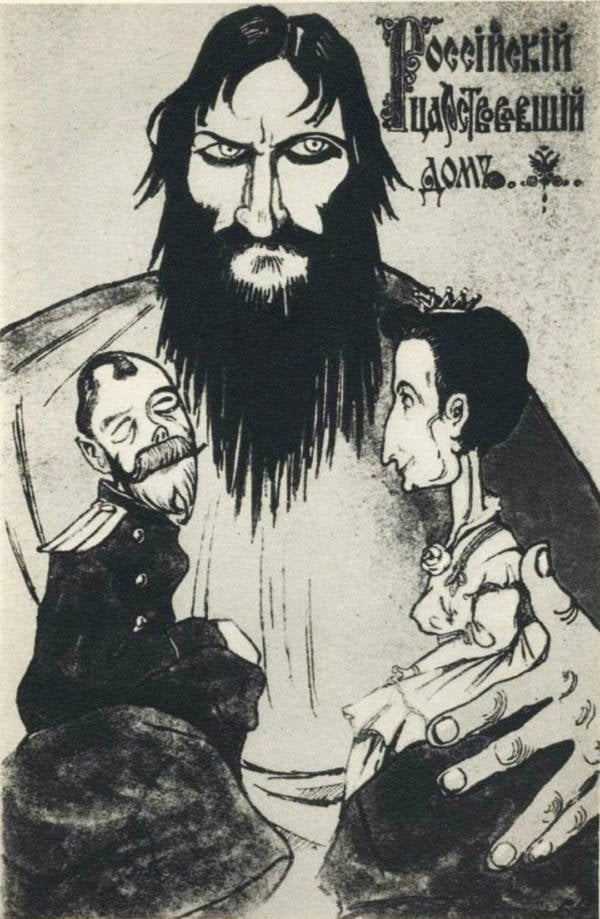
Wikimedia CommonsA political cartoon depicting Nicholas and Alexandra as puppets controlled by Rasputin.
Maria Romanov and her sisters seemed to be equally taken with Rasputin, confiding in him and asking for advice on how to handle their teenage crushes. “My little Pearl,” Rasputin once wrote to Maria, “I miss your simple soul. We will see each other soon. Big Kiss.”
Affections such as these, however, were easily misinterpreted by the outside world, who had no idea of Alexei’s illness and could not understand how the Siberian mystic wielded such influence over the tsarina. Rumors even soon began circulating that Rasputin had actually seduced Alexandra and all four of her daughters.
The Downfall Of The Romanov Family
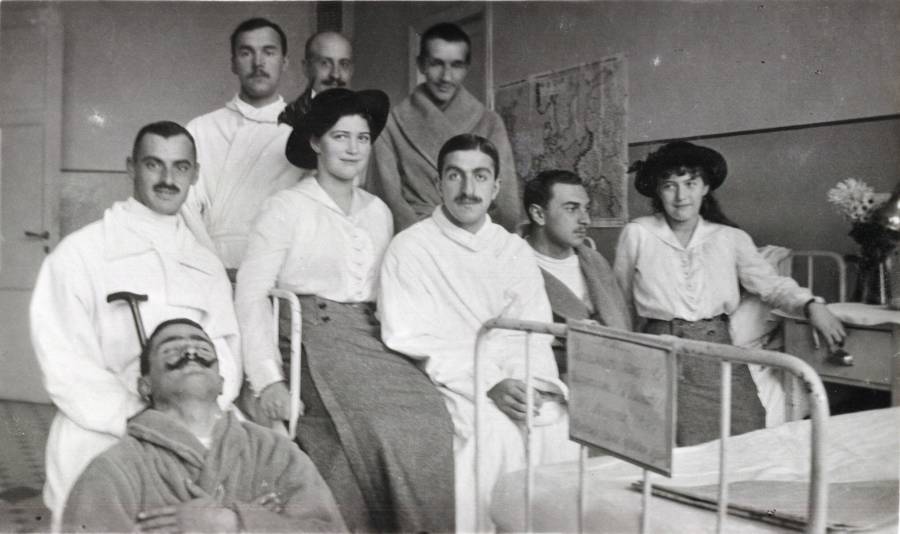
Wikimedia CommonsMaria Romanov and Anastasia at the hospital visiting wounded soldiers.
With the rumors surrounding Rasputin complicating things for the Romanovs, their position grew more precarious still with the outbreak of World War I in 1914. Olga and Tatiana began to work as nurses alongside their mother in a military hospital, while Maria and Anastasia visited wounded soldiers, cheering them up with their humor and lively personalities.
Nonetheless, Russia’s initial enthusiasm for the war began to fade as the casualties mounted. Soon, it was whispered that the tsar’s poor decisions were made at the behest of Rasputin.
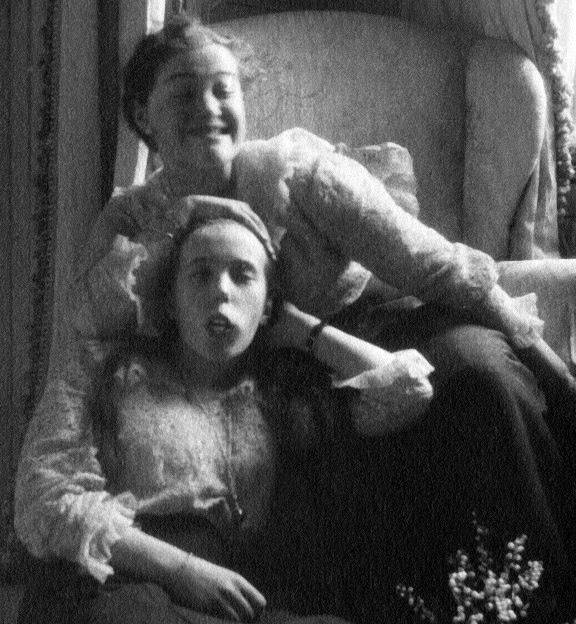
Wikimedia CommonsMaria Romanov and Anastasia making faces at the camera in a moment of fun after the revolution.
The family’s fortunes began to truly unravel when Rasputin was murdered by one of their own relatives in 1916. Nicholas’s power, already tenuous due to the war, continued to weaken as popular discontent grew among the poor and disenfranchised who were increasingly angry with the bourgeoisie.
Finally, a full-blown revolution broke out in February 1917, forcing the tsar to abdicate, leaving the Romanov family at the mercy of the new provisional government.
The Romanovs In Exile
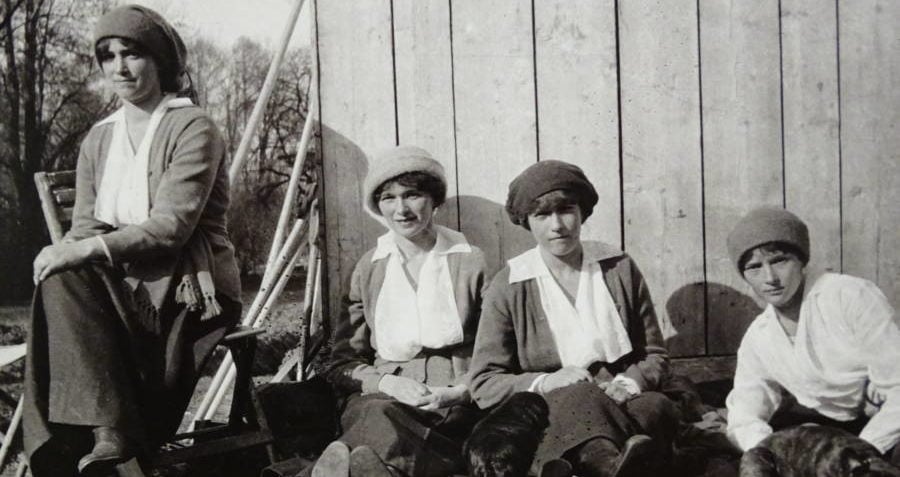
Wikimedia CommonsThe Romanov sisters in exile. Maria is first on the left.
Initially, Maria Romanov and the rest of the imperial family were exiled to Tobolsk, Siberia, where life was dull but bearable. However, when the Marxists revolutionaries known as the Bolsheviks seized power in October 1917, they decided to move the family to Ekaterinburg, where the fervently-Bolshevik population would prevent any attempts at rescue or escape.
The Romanovs were kept inside a house with whitewashed windows and only allowed to go outside for one hour each day. Even Maria’s good nature was pushed to its limits; as she recorded, “It is difficult to write anything pleasant, there is little of that here.”
Yet, Maria Romanov soon found she was still able to pursue her favorite pastime in the “House of Special Purpose.” She began flirting with the teenage guards, one of whom later recalled her as “a girl who loved to have fun” and quickly became the guards’ favorite of the Romanov children.
Even Yakov Yurovsky, leader of the secret police who had been sent to guard the family, remembered how “[Maria’s] sincere modest character was very attractive to the men and she spent most of her time flirting with her jailers.”
One of the guards, Ivan Skorokhodov, even smuggled in a cake for Maria’s 19th birthday, although when the pair were later discovered in a compromising position, the guards were replaced with a decidedly less-friendly set.
The Death And Legacy Of Maria Romanov
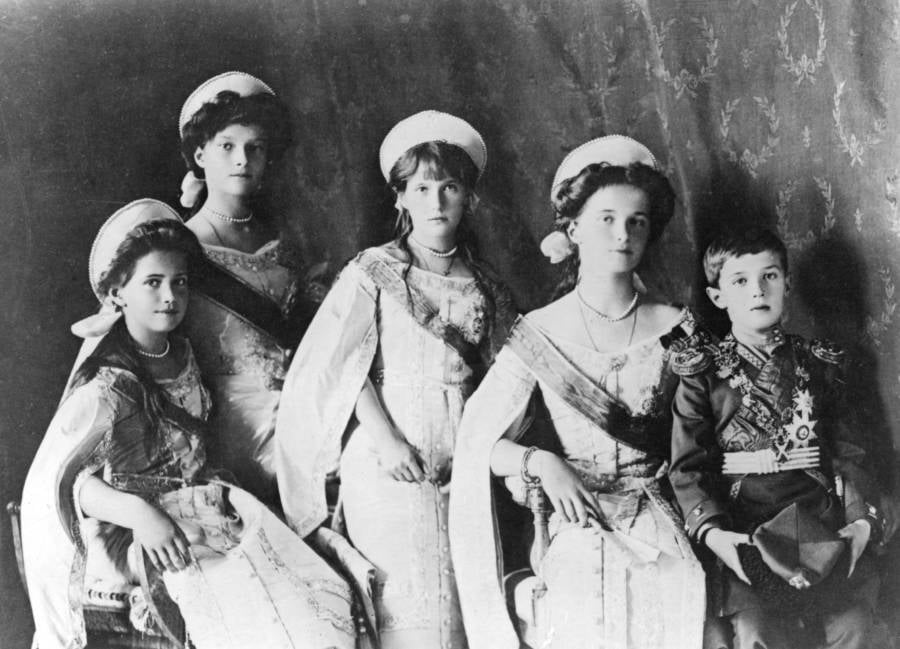
Hulton Archive/Getty ImagesThe five Romanov children. From left, the Grand Duchesses Maria Romanov, Tatiana, Anastasia, and Olga, and the Tsarevich Alexei.
In the early hours of July 17, 1918, Yurovsky woke the family and told them to dress and go to the basement. The Romanovs hoped that this meant rescue by their supporters. While it was true that pro-Romanov forces were closing in on Ekaterinburg, the actual reason was far grimmer.
The Bolsheviks had decided to execute the royal family rather than move them. Yurovsky read this news aloud to Nicholas who barely had time to cry “What?” before Russia’s last tsar was shot in the chest.
The basement rumbled with shots and screams, but when the smoke cleared, the terrified grand duchesses were all still alive. Unbeknownst to their captors, they had sewn the royal jewels into their corsets, turning them into a protective armor.
One of the executioners repeatedly attempted to stab Maria Romanov in the chest, but “the bayonet wouldn’t pierce her bodice” so he shot the sobbing girl directly in the head.
As the bodies were being carried outside, one of the girls — either Maria or Anastasia. account vary — “cried out and covered her face with her hands.” She was stabbed again in such a frenzy that several soldiers vomited while others fled the scene.

Wikimedia CommonsThe bullet-riddled basement of the Ipatiev House where the Romanovs met their grisly end.
The final resting place of Russia’s last imperial family remained a secret for decades. For years, rumors abounded that at least one of the grand duchesses had survived. Although Anna Anderson (who claimed to be Anastasia) would ultimately make the youngest of the sisters the most famous, there were also several women who came forward claiming to be Maria Romanov.
However, the remains of the Romanovs were finally discovered in 1991, but the missing bodies of Alexei and one of the Little Pair breathed new life into old rumors.
It wasn’t until 2008 that DNA testing conclusively proved that the two bodies found in a nearby shallow grave indeed belonged to Alexei and his sister, finally putting the ghost of Maria Romanov to rest once and for all.
Next, read all about Anastasia, the more famous sister of Maria Romanov. Then, take a look at some haunting photos from the last days of the Romanov family.





